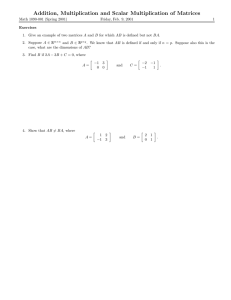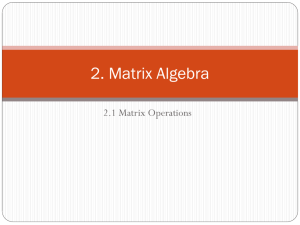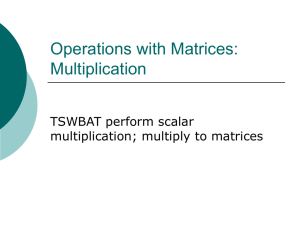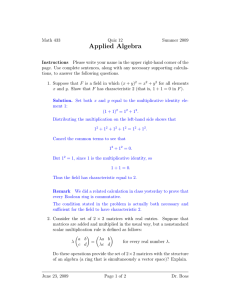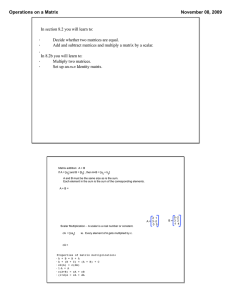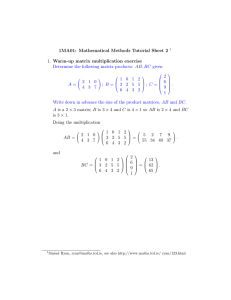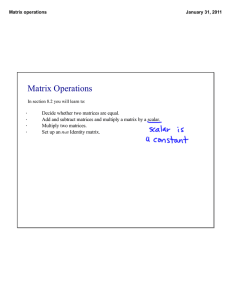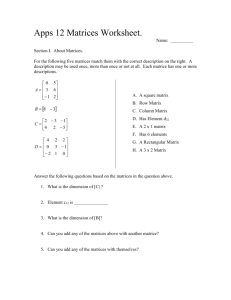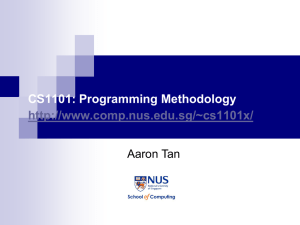MATH 2360-D01 WEEK 2
advertisement
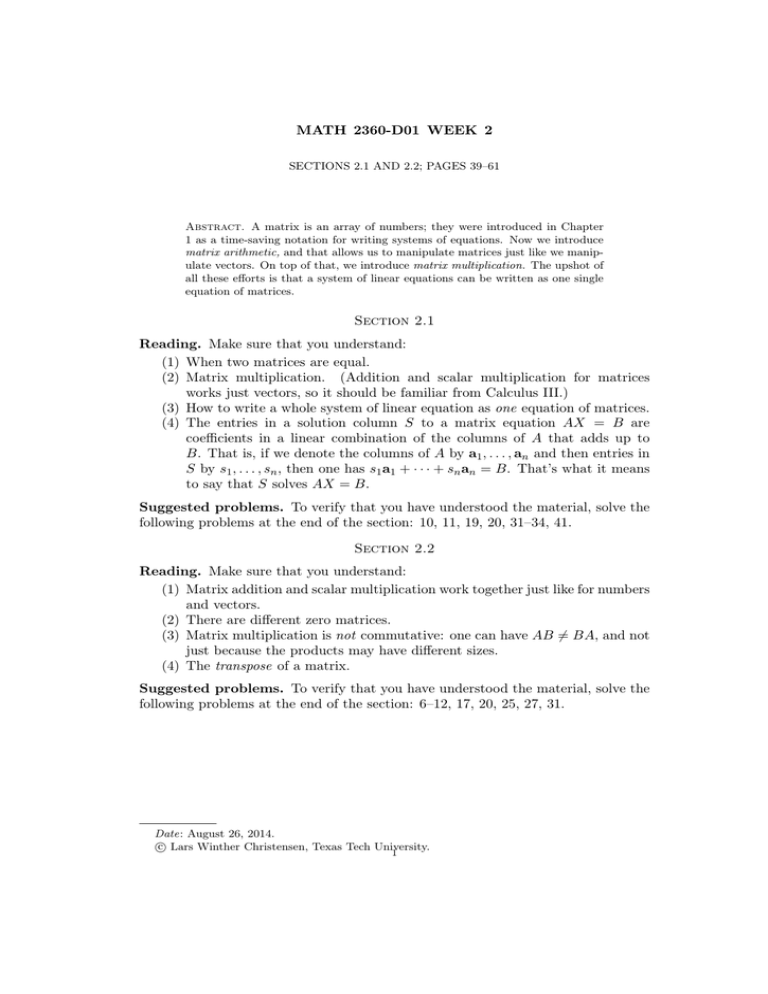
MATH 2360-D01 WEEK 2 SECTIONS 2.1 AND 2.2; PAGES 39–61 Abstract. A matrix is an array of numbers; they were introduced in Chapter 1 as a time-saving notation for writing systems of equations. Now we introduce matrix arithmetic, and that allows us to manipulate matrices just like we manipulate vectors. On top of that, we introduce matrix multiplication. The upshot of all these efforts is that a system of linear equations can be written as one single equation of matrices. Section 2.1 Reading. Make sure that you understand: (1) When two matrices are equal. (2) Matrix multiplication. (Addition and scalar multiplication for matrices works just vectors, so it should be familiar from Calculus III.) (3) How to write a whole system of linear equation as one equation of matrices. (4) The entries in a solution column S to a matrix equation AX = B are coefficients in a linear combination of the columns of A that adds up to B. That is, if we denote the columns of A by a1 , . . . , an and then entries in S by s1 , . . . , sn , then one has s1 a1 + · · · + sn an = B. That’s what it means to say that S solves AX = B. Suggested problems. To verify that you have understood the material, solve the following problems at the end of the section: 10, 11, 19, 20, 31–34, 41. Section 2.2 Reading. Make sure that you understand: (1) Matrix addition and scalar multiplication work together just like for numbers and vectors. (2) There are different zero matrices. (3) Matrix multiplication is not commutative: one can have AB 6= BA, and not just because the products may have different sizes. (4) The transpose of a matrix. Suggested problems. To verify that you have understood the material, solve the following problems at the end of the section: 6–12, 17, 20, 25, 27, 31. Date: August 26, 2014. c Lars Winther Christensen, Texas Tech University. 1


